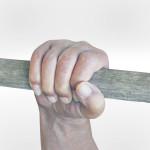Take Action when a Shooting Attack Starts
While active shooter situations remain relatively rare, our recent examination of the FBI report indicates these unfortunate events are occurring more frequently. Only proper training—both mental and physical–can help prepare you for an active shooter encounter.
In researching this piece, it seems mentioning the Run, Hide, Fight video is unavoidable, so let’s begin here. If you are unfamiliar with it, the Run, Hide, Fight video was produced by the City of Houston Mayor’s Office in 2012 funded by a grant from the Department of Homeland Security. With 3.5 million YouTube views and a prominent placement on the FBI website, this video has become the national protocol on what to do when an armed perpetrator enters a business or other crowded locale with the intent to kill.
So what is Run, Hide, Fight really?
Run (escape from harm; remove yourself from danger)
- If there is an escape path, attempt to evacuate
- Evacuate whether others agree to or not
- Leave your belongings behind
- Help others escape – if possible
- Prevent others from entering the area
- Call 9-1-1 when you are safe
Hide (if you are unable to escape)
- Lock and/or barricade the door
- Silence your cell phone/pager
- Hide behind large objects (preferably bulletproof)
- Remain very quiet
Fight (as a last resort)
- Attempt to incapacitate the shooter
- Act with physical aggression
- Utilize improvised weapons
- Commit to your actions fully
The goal of the Houston video was to raise awareness of active shooter situations and underscore the need for an evacuation plan–which they sum up with a catchy slogan. Perhaps they achieved their limited objective–you be the judge. But the over-simplification of dangerous situations can be, well, dangerous. There are certainly a few more elements to consider.
Upon recognizing that an attack is taking place, a critical step must be taken before a person can “run, hide, fight.”
First you must determine from which direction the gunfire is coming. Without this assessment, a potential victim could run from a position of relative safety into danger. While seeking cover is always a top priority, getting low and determining your position relative to the attacker allows you to minimize yourself as a target – while not compromising your mobility (and then allowing you to move accordingly).
One should be aware, however, that depending upon your location (outside among tall buildings) gunfire echo may hinder your efforts to locate the direction of the threat–so take cover first. And because our Krav Maga training assumes there are multiple attackers–the possibility of multiple gunmen must not immediately be ruled out–further complicating your ability to move to safe cover and then escape.
Those professionally trained in armed combat situations use the acronym MDACC to describe the tactical formula they employ when they come under fire. MDACC stands for motion, distance, angle, cover and concealment.
Motion & Distance
It is much more difficult to shoot a moving target than a stationary one—particularly if the target is moving at a distance. The FBI study revealed most shootings happen inside 10 feet with a pistol (largely due to the fact that rifles and shotguns are difficult to conceal are therefore not as widely used). In fact, not many people can hit a stationary target beyond 50 feet with a pistol. When you become a moving target, you decrease your odds of being shot dramatically. Most people can put a distance of 50 feet between themselves and an attacker in just a few seconds—making motion and distance your friends.
Angle
The angle between the target and the shooter is also important. Never run away in a straight line! A target running jaggedly at an angle requires the shooter to lead the target–which requires a great deal of practice even with a rifle or shotgun. Only the best of the best shooters can effectively lead a moving target with a pistol. If you can run at an angle behind cars, furniture, or trees for example, this concept is even more effective.
Cover & Concealment
Let’s take a moment to distinguish between cover and concealment. While concealment is simply something that hides your body from observation, the tactical definition of cover is concealment that will stop bullets. If you are forced to respond to a lethal confrontation, both cover and concealment can work to your advantage. Concealment will hide you; cover will protect you from incoming fire. Obviously, given a choice between mere concealment and cover, choose cover; but in escaping, take whatever comes first and look for opportunities to improve your tactical response.
Of all the options presented, we believe that you can best protect yourself, your family, and the public by having substantial tactical firearms training and carrying a licensed gun on your person. However, we realize everyone is not going to carry for a variety of reasons.
Simply put, an event of this nature would test even the most well trained individual. And there are too many critical factors to consider – a simple video or article cannot and will not address them all. So let this article serve as a reference point to provoke questions and inspire scenarios that will enhance your training.
Walk in peace.




